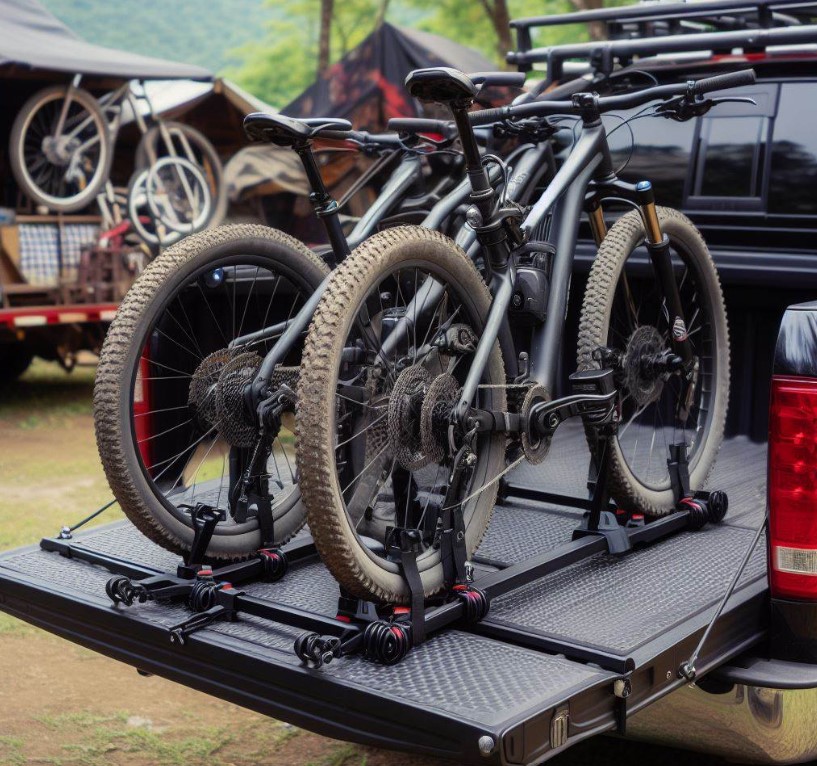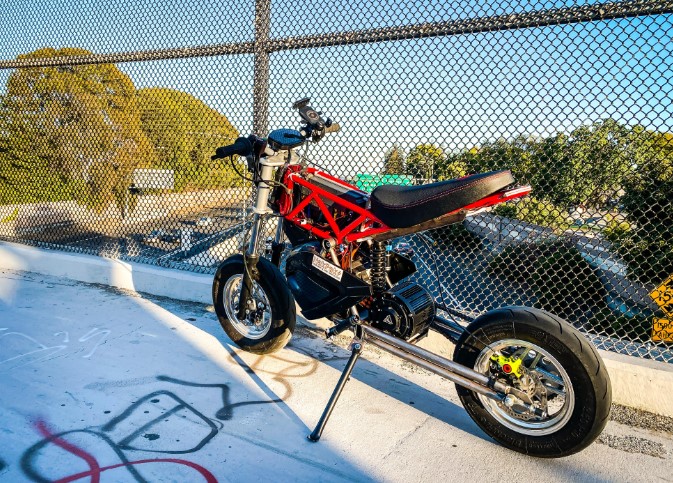Are Tailgate Pads Safe For Bikes? [Answered]
Last summer, I used a tailgate pad to transport my bikes for a family camping trip. It was a game-changer! In this article, we’ll explore Are Tailgate Pads Safe For Bikes? and how tailgate pads provide a simple and effective solution for carrying your bikes safely on your truck. Next, we’ll delve into the importance of choosing the right tailgate pad for your needs.
Key Takeaways
- Proper installation is crucial for safety.
- Regular maintenance and checks increase reliability.
- Correct bike placement prevents damage and ensures safety.
Are Tailgate Pads Safe For Bikes?
Yes, tailgate pads are generally safe for bikes if used properly. They act like a cushion to protect your bike and truck while you drive. Make sure the pad is the right size for your truck and that your bike is strapped down tightly. Check the pad often for any damage to keep it working right.

Understanding Tailgate Pads
Tailgate pads are a popular solution for cyclists looking to transport their bikes using a truck. They are not only practical but also provide a high level of protection when fitted correctly. The design of these pads usually includes sturdy straps and secure anchor points, ensuring that bikes remain stable during transit.
Tailgate pads are crafted from durable materials to withstand road debris and weather conditions. This resilience helps maintain the safety and integrity of bikes during transportation. Regular inspection and cleaning of the pad can extend its life and maintain its protective qualities.
Installation and Maintenance
Proper Installation Techniques
The safety of tailgate pads hinges on their correct installation. This involves securely attaching the pad to the tailgate and ensuring that all straps and buckles are fastened tightly. A loose pad can lead to bike movement, which might cause damage or loss during transit.
Routine maintenance is also a part of keeping your tailgate pad safe. Check for any signs of wear and tear, such as fraying straps or tears in the fabric. Addressing these issues promptly ensures the continued safety and effectiveness of the pad.
Maintaining Your Tailgate Pad
Regular maintenance is crucial to ensure the longevity and safety of your tailgate pad. This includes cleaning the pad to remove dirt and grime, inspecting for damage, and storing it properly when not in use. Proper care prevents the breakdown of materials, which can compromise the safety of the bikes it carries.
Bike Placement and Security
Securing Bikes Properly
The arrangement of bikes on the tailgate pad significantly affects their security during transportation. Ensure that each bike is positioned so that it does not rub against others or the vehicle, which can lead to damage. Use the pad’s straps and anchor points to secure each bike firmly.
Minimizing Movement and Damage
To prevent movement and potential damage, it’s important to evenly distribute the bikes’ weight across the tailgate pad. Additionally, securing the bikes’ front wheels can prevent them from turning and causing instability or damage during transit.
Tailgate Pad Materials and Design
Quality of Materials
The safety and durability of tailgate pads depend significantly on the quality of materials used. High-quality, weather-resistant materials protect your bike from the elements and road debris. They also endure the wear and tear of regular use, maintaining their protective properties over time.
Design Features for Safety
Modern tailgate pads come with various design features aimed at enhancing bike safety. These include padded separators, secure strap systems, and soft linings to prevent scratches. Choosing a pad with these features can make a significant difference in the safety and security of your bikes.
Compatibility and Fit

Vehicle Compatibility
Not all tailgate pads fit every type of vehicle. It’s essential to choose a pad that properly fits your truck’s tailgate. A well-fitted pad provides optimal protection and reduces the risk of bikes shifting or becoming dislodged during transport.
Bike Compatibility
Similarly, ensure that the tailgate pad accommodates the size and type of bikes you intend to transport. A good fit prevents excessive movement and secures the bikes properly against the pad, minimizing the risk of damage.
Safety Tips and Best Practices
Following Manufacturer’s Instructions
Adhering to the manufacturer’s installation and usage instructions is critical for ensuring the safety of your tailgate pad and bikes. Misuse or incorrect installation can lead to accidents and damage.
Regular Checks and Balancing
Before each trip, perform a thorough check to ensure all bikes are securely attached and that the pad is in good condition. Regular checks and balancing of the load can prevent accidents and ensure a safe transport experience.
Alternative Methods for Transporting Bikes
Aside from tailgate pads, there are other methods to transport bikes safely and effectively. One popular alternative is using bike racks. Bike racks come in various types, such as hitch-mounted, roof-mounted, and trunk-mounted options. They provide a secure and accessible way to transport bikes without needing a truck.
Another method is the use of bike trailers. These are particularly useful for larger loads or longer trips. Bike trailers attach to the back of your vehicle and can carry multiple bikes at once, along with additional gear. They offer excellent protection and stability, though they require a suitable vehicle and additional space for towing.
Ensuring Safety with Alternative Transport Methods
When using bike racks, it’s crucial to ensure they are compatible with your vehicle and bikes. Proper installation and secure fastening are essential to prevent damage and ensure safety. Regular maintenance, such as checking for rust, wear, and loose components, is also vital.
For bike trailers, checking the hitch connection, tire pressure, and lights before each use is imperative. Ensuring that the trailer is visible and properly attached to your vehicle can prevent accidents and ensure a safe journey for your bikes.
Conclusion
In conclusion, tailgate pads can be safe for bikes when used appropriately. They provide an effective solution for transporting bikes while protecting them and your vehicle from damage.
By selecting the right tailgate pad, installing it correctly, and adhering to safety practices, you can ensure the safe and secure transportation of your bikes. Always remember that the safety of your equipment starts with proper care and attention to detail.
Frequently Asked Questions
What is the best way to clean a tailgate pad?
Clean your tailgate pad with mild soap and water, avoiding harsh chemicals. Rinse thoroughly and let it air dry completely before storing or reusing. This prevents mold and maintains the material’s integrity.
Can tailgate pads fit any truck model?
No, tailgate pads are not one-size-fits-all. They come in different sizes and shapes. Ensure you choose a pad that fits your truck’s specific make and model for optimal protection and fit.
How many bikes can I safely transport with a tailgate pad?
The number of bikes you can safely transport depends on the size of your tailgate pad and truck. Typically, you can carry between two to seven bikes. Always ensure they are properly spaced and secured.
Are tailgate pads weather-resistant?
Yes, most tailgate pads are made from weather-resistant materials. However, they can wear over time, so regular checks and maintenance are essential to ensure they remain in good condition.
Can I use a tailgate pad with an aftermarket backup camera?
Yes, but you may need a tailgate pad designed with a camera cutout or one that does not obstruct the camera’s view. Ensure the pad installation does not interfere with the camera’s operation.

Welcome to the exhilarating world of Matt Rex, a professional car racer turned renowned vehicle enthusiast. Immerse yourself in his captivating blog as he shares heart-pounding adventures, expert reviews, and valuable insights on cars, trucks, jets, and more. Fuel your passion for speed and discover the beauty of vehicles through Matt’s engaging stories and meticulous expertise. Join the ever-growing community of enthusiasts who find inspiration and expert advice in Matt Rex’s blog—a digital hub where the thrill of speed meets the pursuit of knowledge.






